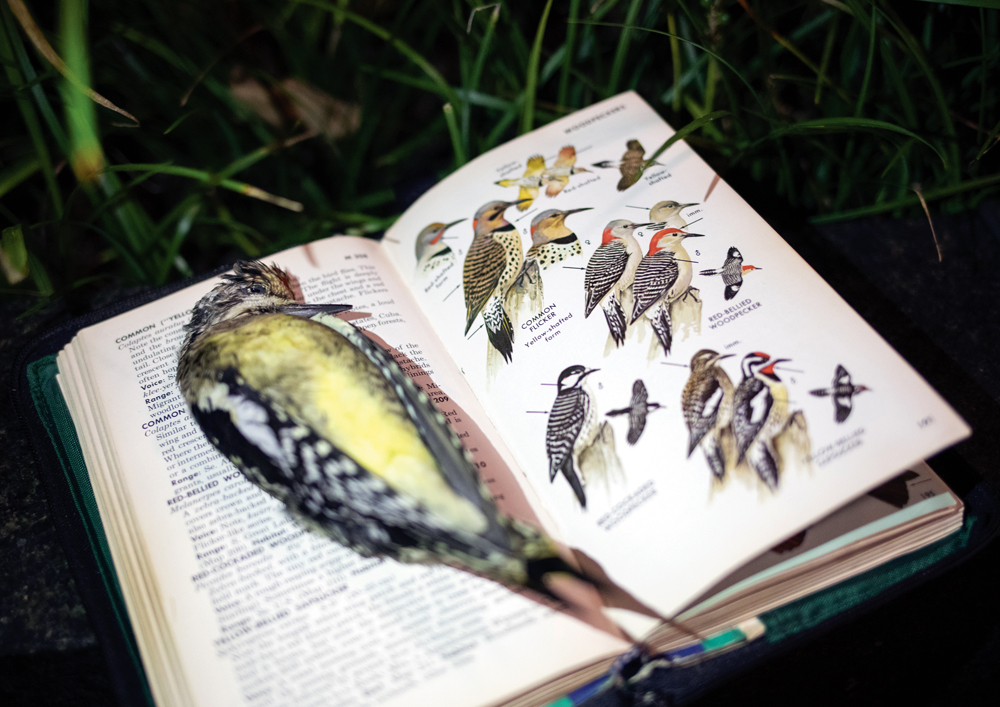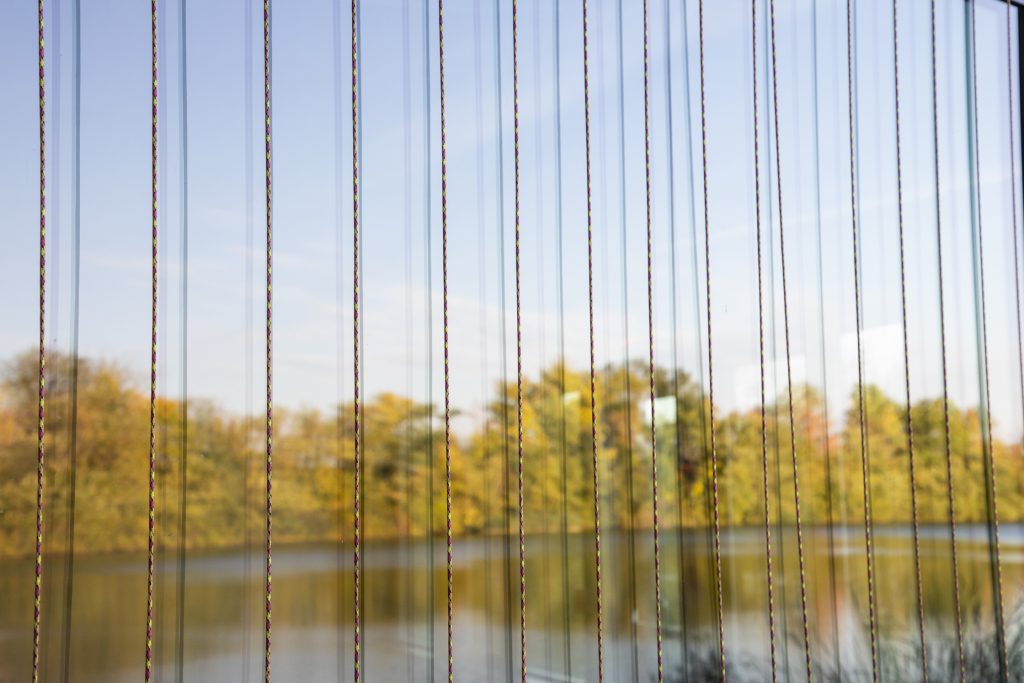
News from the Noteworthy from Delaware-Otsego Audubon Society
Bird-Window Collisions Not Just a City Problem
Birds are facing significant population challenges all over the world. Changes in habitat, seasons that are shifting, severe storms and increased temperatures are all playing a part in an overall decline in numbers. The National Audubon Society is working to find ways to change those trajectories through significant and ambitious goals in conservation—from both ends of the spectrum: increasing the chances for successful breeding bird seasons, and reducing bird mortality rates.
We hear a good deal about bird-window collisions that occur in urban environments, because really, when you can show pictures of hundreds of bird deaths in a day during migration season, it becomes news. We read about it, we see pictures of it and, in response, we work to find solutions to prevent it from happening again.
What we don’t hear about are the average of two birds per residence per year that occur from window strikes in suburban and rural neighborhoods. Although these don’t feel like they are significant in comparison, if you add those numbers up, the deaths of birds as a result are staggering—more than in any city. It is estimated that up to 1 billion birds die as a result of window collisions per year in North America. It is considered to be the third highest cause of bird mortality, following habitat loss and predation by domestic cats.
Sad facts:
- Up to 50 percent of bird-window collisions leave no evidence at all.
- Many of the birds that fly away are likely to die later of their injuries.
- Birds most often suffer concussions and internal injuries, which can take days to kill them.
- If a collision kills a parent bird, the young will most likely also die.
- This is all preventable if people take action at their own homes.
Compounding the impacts of window strikes are pollinator gardens and bird feeders that are set up adjacent to our homes, near our windows. If you are providing food and shelter resources for birds, it is important to take additional steps to prevent window collisions in that area. There are some simple solutions that work, including insect screens, hanging cords and patterned dots. Each of these prevention mechanisms can be easy and affordable do-it-yourself projects. Small, evenly-spaced markers (2” rows and max 4” columns are recommended) placed on the outside of a window work best and help to preserve your view.

Another practice that can help protect birds from window collisions is to minimize lighting impacts at night from your home. Make sure to close curtains, shades, and blinds and limit outdoor lighting. Set up motion sensors so that lights only switch on when they are needed, and make sure to direct your outdoor lighting downward. These actions help to minimize attracting birds and keeps them from getting disoriented, particularly during migration seasons.
For more information and step-by-step guidance on installing prevention mechanisms for your home windows, visit Pennsylvania Audubon’s resources at https://pa.audubon.org/conservation/protecting-birds-striking-glass-windows. To learn about ways to get involved with our local Audubon chapter, visit Delaware-Otsego Audubon Society online at https://www.doas.us.
Primary Source: BirdSafe Homes by the Bird-window Collision Working Group, a collaboration between The Acopian Center for Ornithology, Muhlenberg College, Lehigh Valley Audubon Society, Wyncote Audubon Society and Audubon. Other sources include “Reflections of a Bird Collision Monitor,” originally published in Audubon magazine, Spring 2024 issue, and “Unseen Danger: One Day of Deadly Window Strikes for New York’s Birds” on Audubon.org.
Susan O’Handley, education chair for the Delaware-Otsego Audubon Society, has been involved with local Audubon chapters for more than 30 years and has served on the Board of Directors for the DOAS since 2012 (10 years as a co-president). O’Handley also works with the Audubon NY/CT Council Board, which is composed of 27 Audubon chapters in New York State and six chapters in Connecticut, and serves on the Advisory Board for the Audubon NY/CT Regional Office as the chapter representative.

